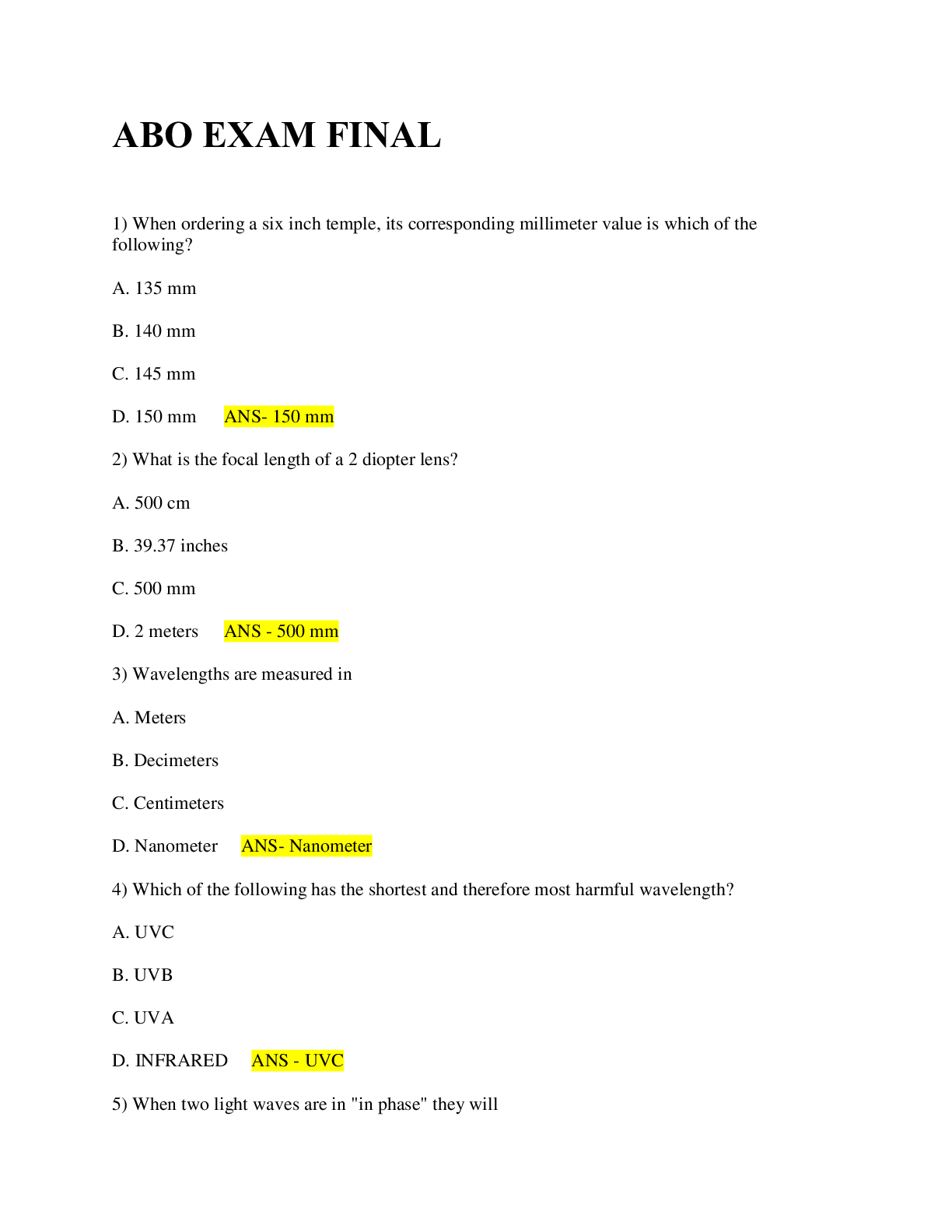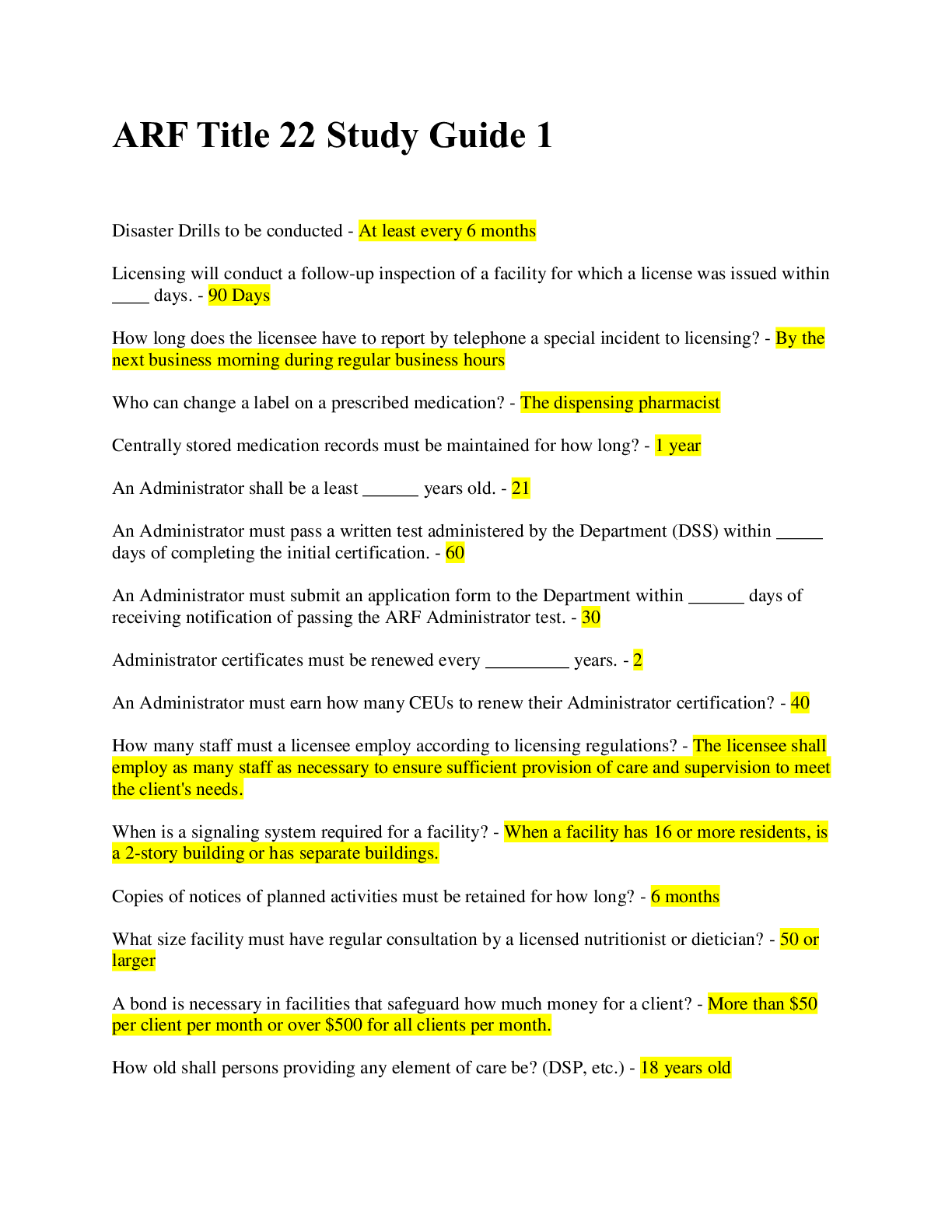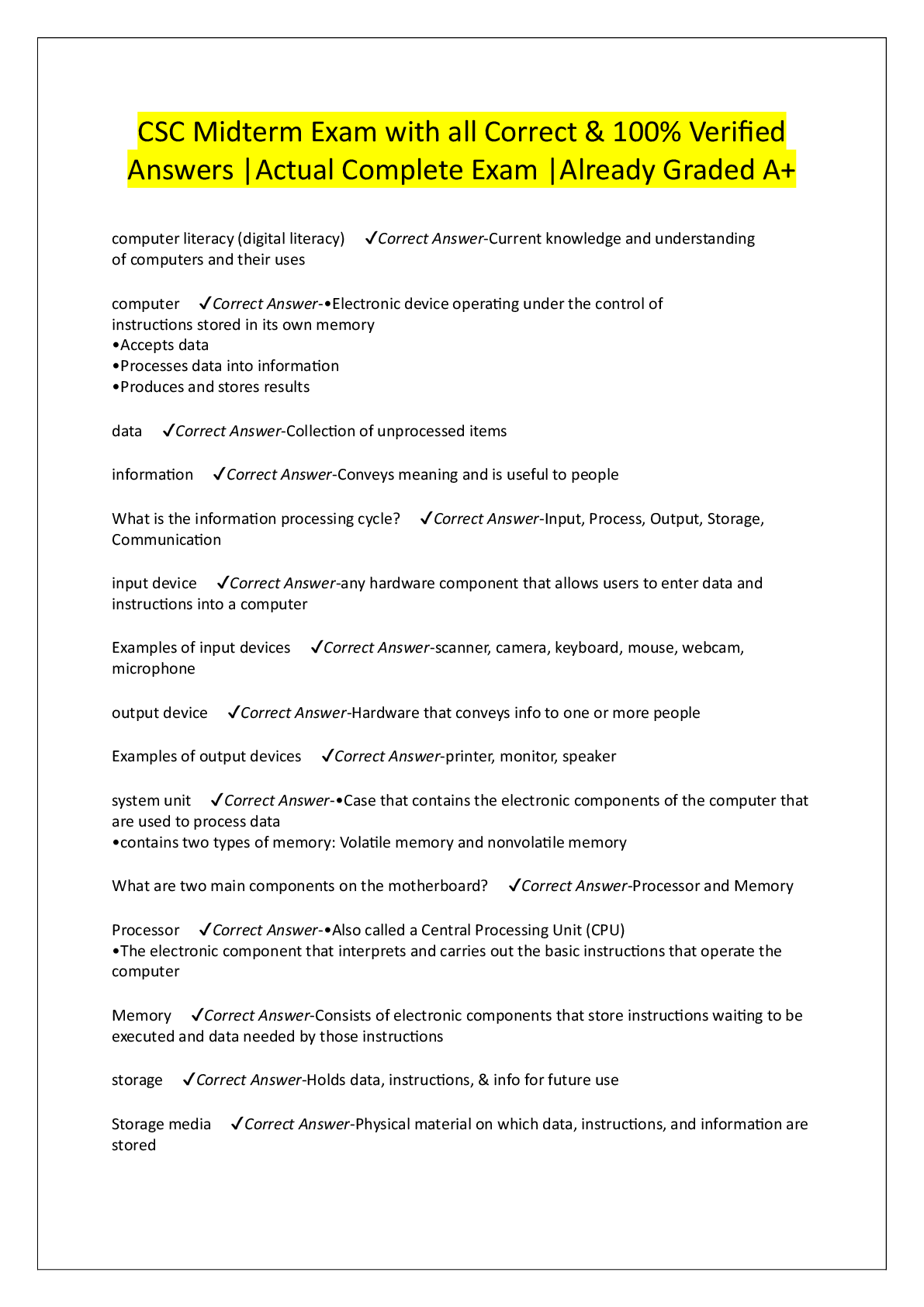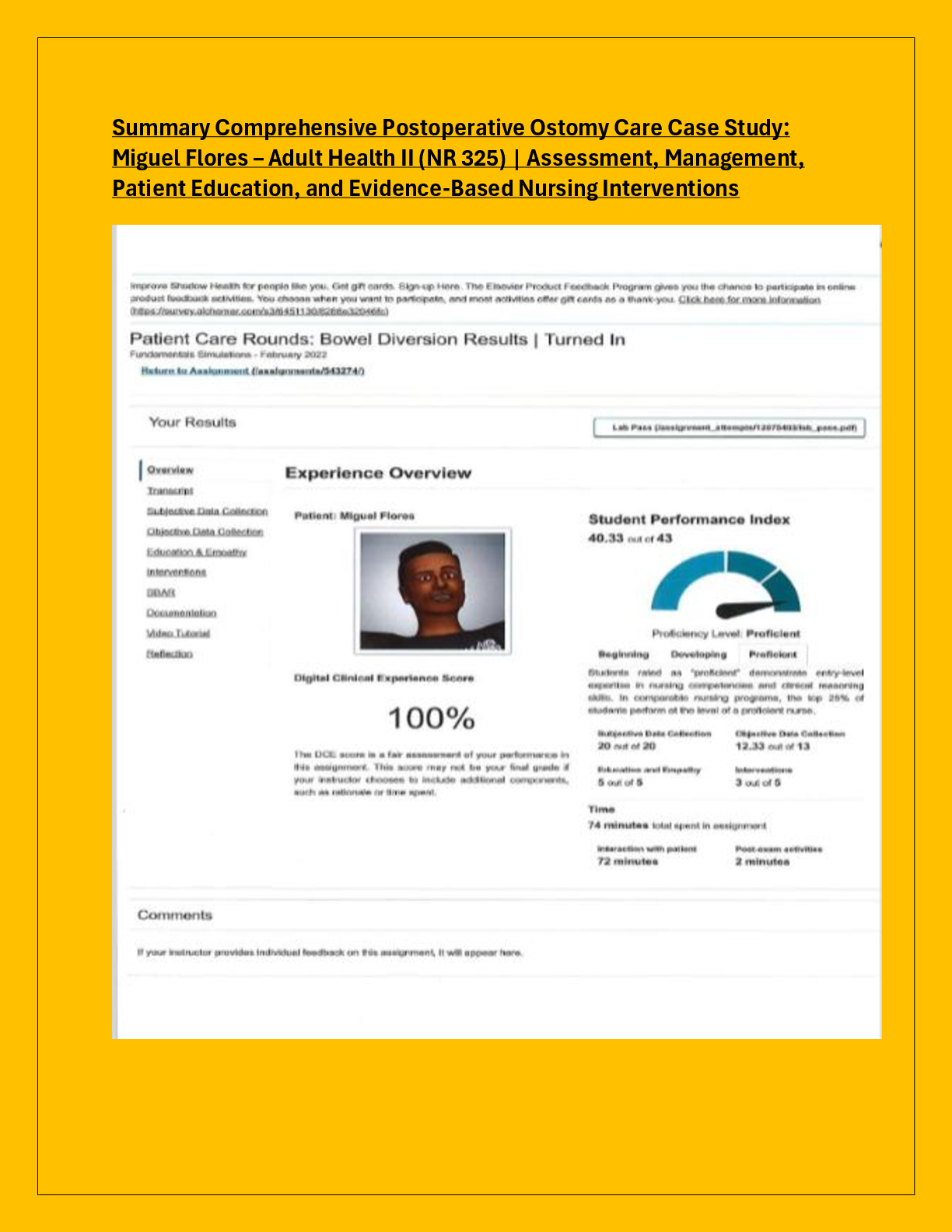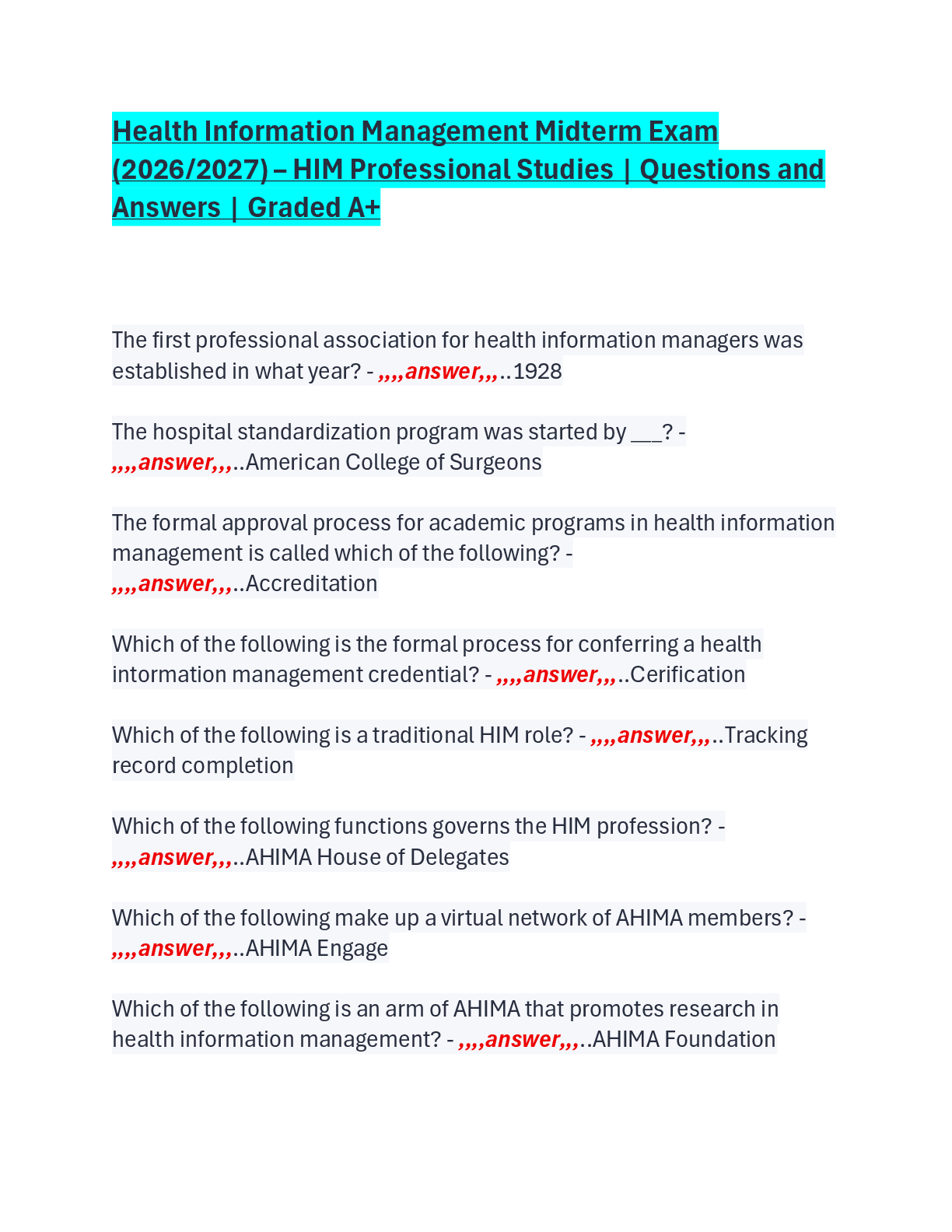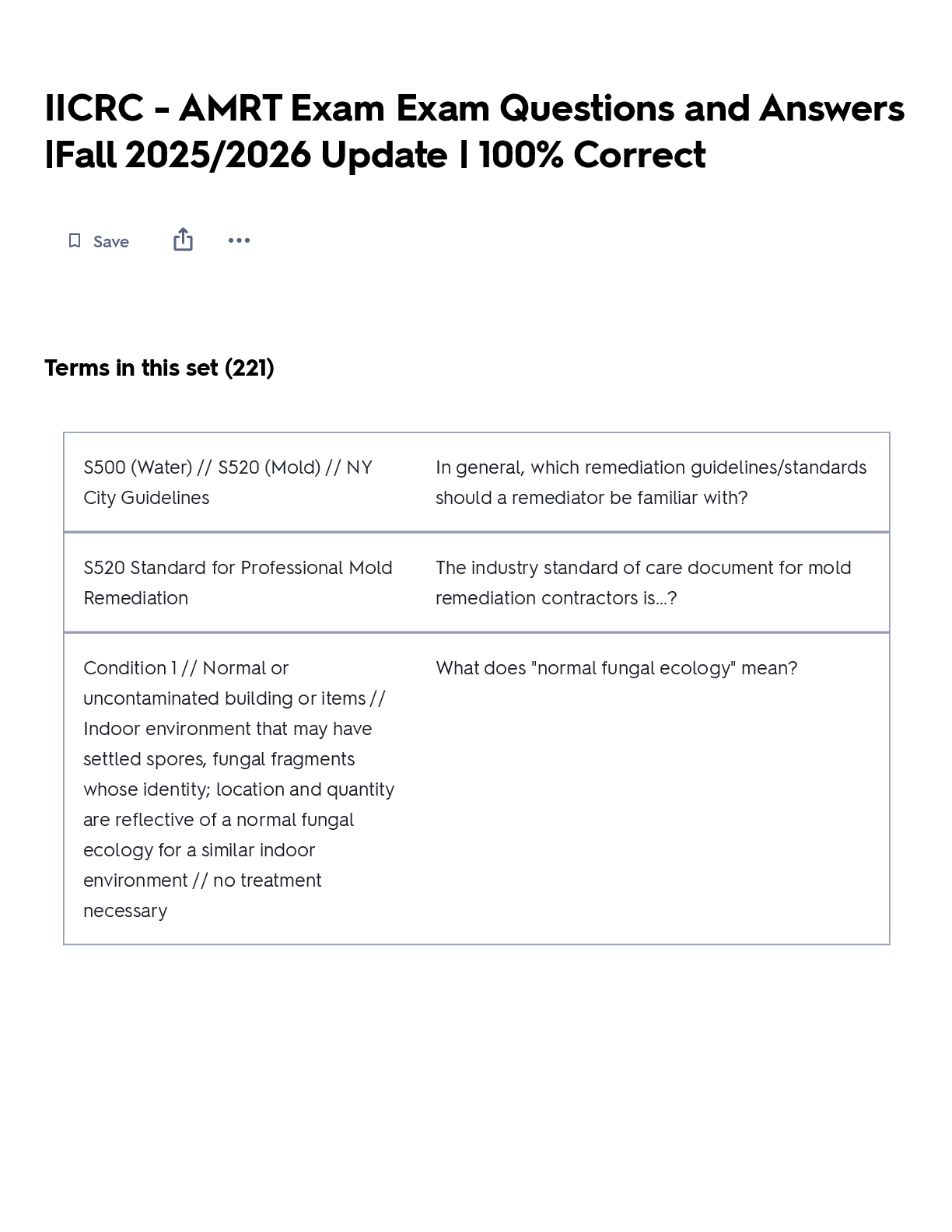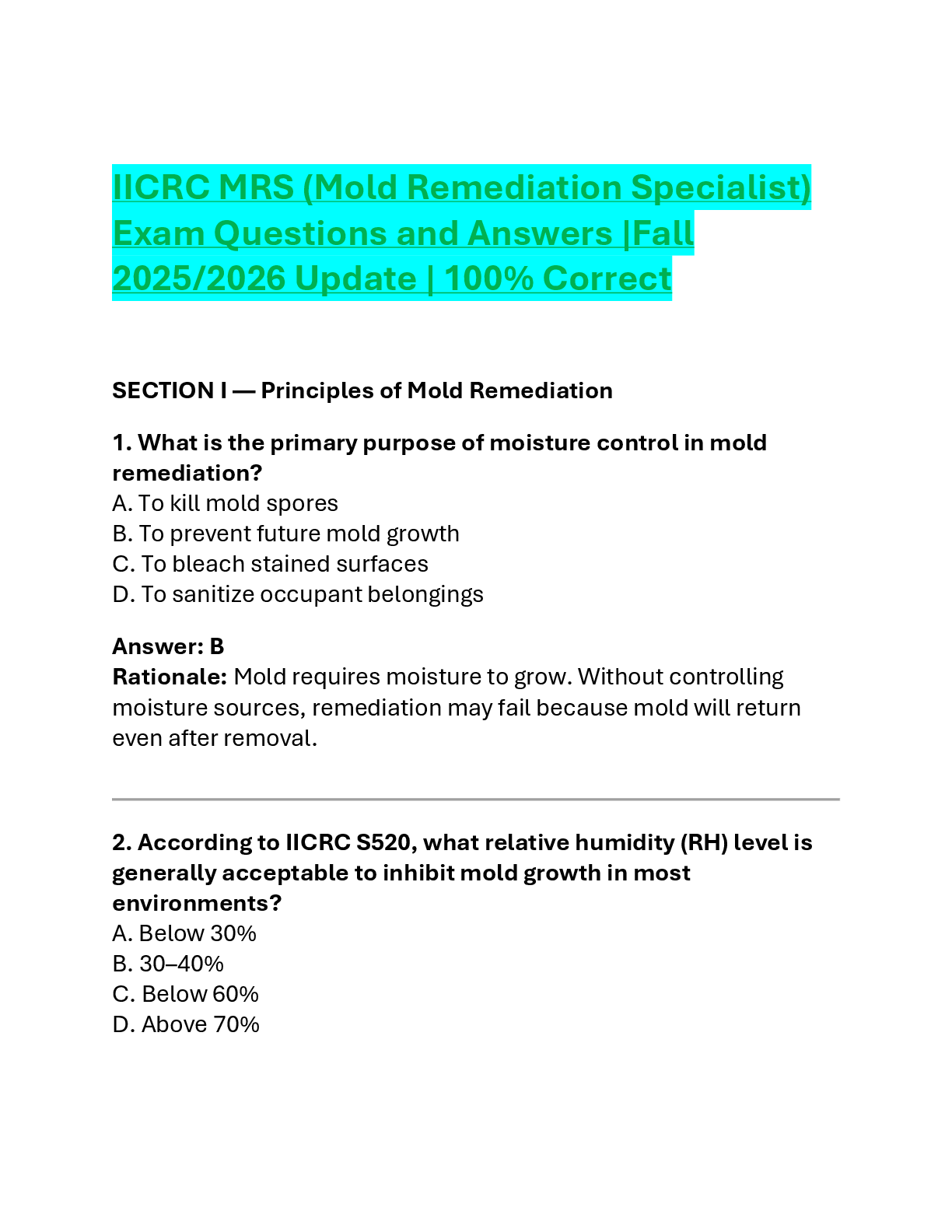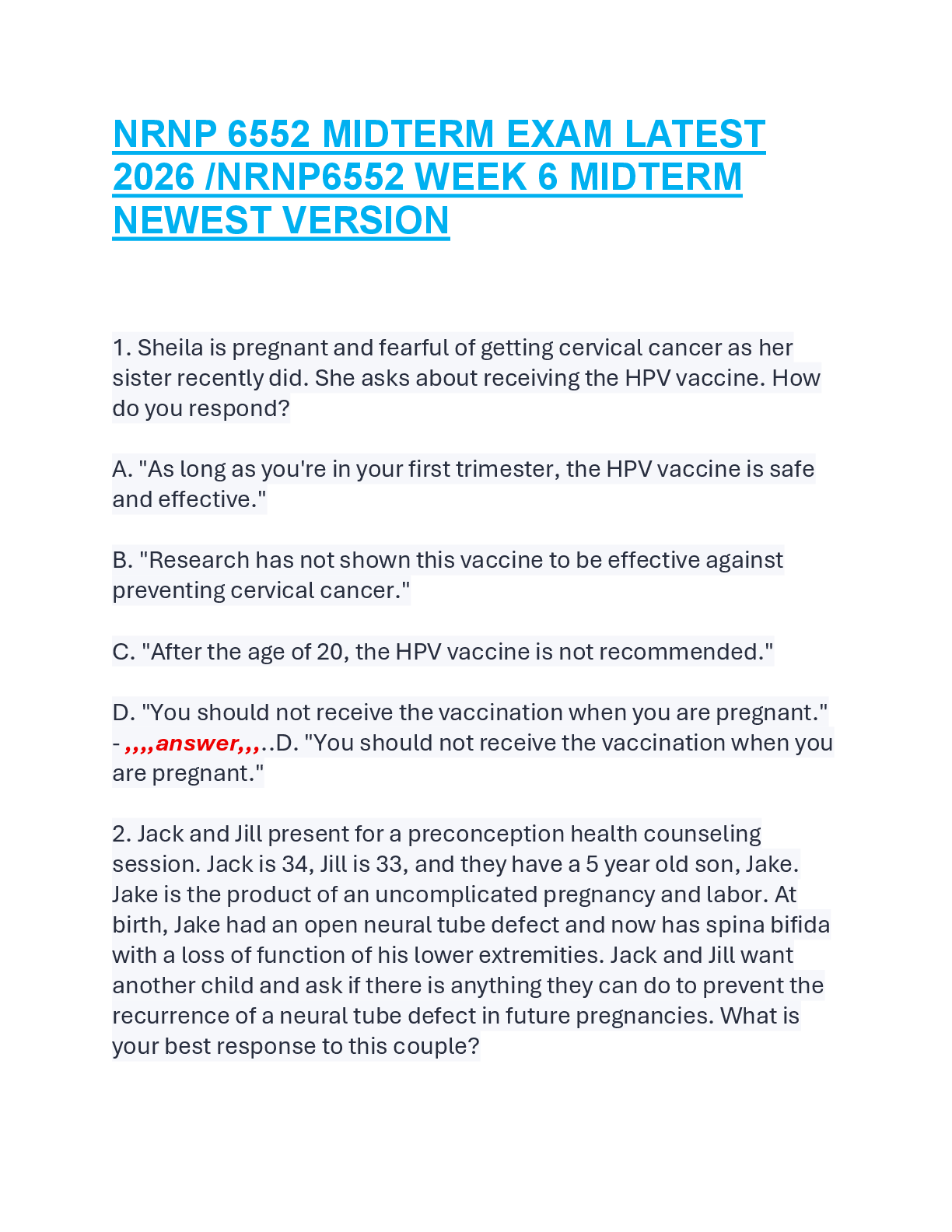Bio100 Exam 1 -100% Correct Answers
Document Content and Description Below
How is discovery-based science different from hypothesis-driven science? - ANS -Discovery Based science- has the goal of finding new information and serves to form new hypotheses. Hypothesis Driven sc ... ience- uses deduction and the scientific method. What are the steps of the Scientific Method? - ANS -1. Do an observation 2. Ask a question 3. Construct a hypothesis 4. Make a prediction 5. Test the experiment 6. Analyze the results 7. Draw a conclusion Remember: A hypothesis is an educated guess to your question, must be testable, and can never be proven! Are large or small sample sizes more accurate for scientific studies? - ANS -Large sample sizes are more accurate for scientific studies because it increase the chance of finding a significant difference and leads to a more precise data. What is the difference between a hypothesis and a scientific theory? - ANS -A hypothesis is an explanation that may or may not have undergone scientific testing, while a theory is a hypothesis that has undergone numerous tests over many years and has accumulated a large body of evidence in support of the explanation. What are the six qualities of life? Be able to describe each quality and not just recognize them. - ANS -1. All living things have cells - Cell is the smallest unit of life. Cell contains all the material that are necessary for life to exist. Some organisms are unicellular (only one cell) like bacteria, multicellular (many cells) like human. Human cells have different function like for nerves or skin. 2. Living things can sense and response to change - Living things response to a stimuli. A stimuli could include smells (good or bad), taste, sound, heat (touching a hot stove), light or darkness, or gravity. - Homeostasis: When an organism responds to changes in order to keep its internal environment the same. 3. Living things reproduce - Living things must reproduce to ensure that their species survives. 4. Living things have DNA - Living things have DNA because it controls all the characteristics and activities of an organism. 5. Living things use energy - Organisms takes in energy, converts it to useful forms, and expels energy. [Show More]
Last updated: 7 months ago
Preview 3 out of 11 pages

Loading document previews ...
Buy this document to get the full access instantly
Instant Download Access after purchase
Buy NowInstant download
We Accept:

Reviews( 0 )
$9.00
Can't find what you want? Try our AI powered Search
Document information
Connected school, study & course
About the document
Uploaded On
Sep 25, 2022
Number of pages
11
Written in
All
Additional information
This document has been written for:
Uploaded
Sep 25, 2022
Downloads
0
Views
114


